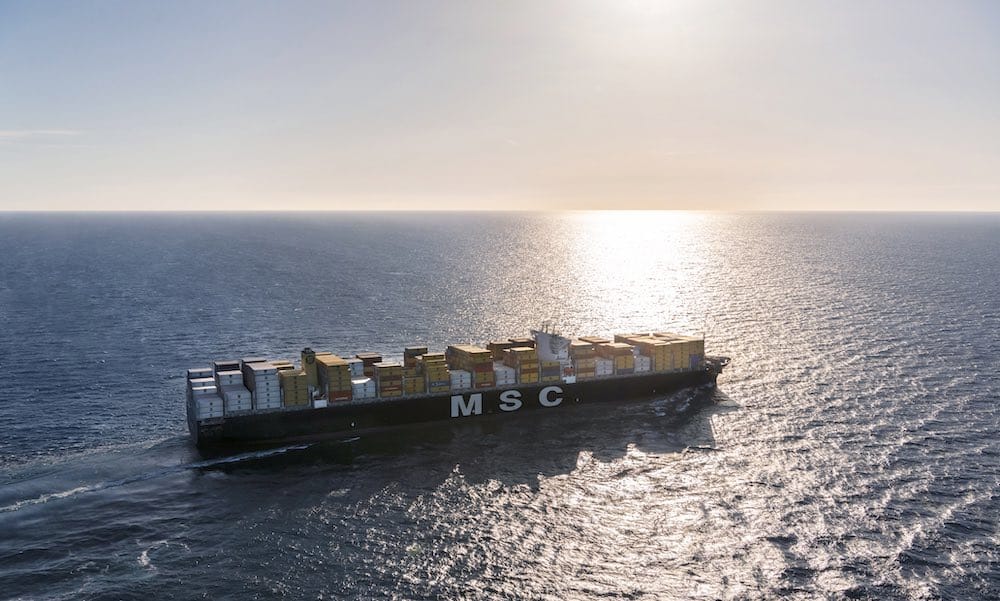MSC spending spree leaps higher
MSC Launches Major Vessel Acquisition Drive

The Mediterranean Shipping Company (MSC), the world’s leading container line, is making headlines with an aggressive acquisition strategy, having secured over ten panamax and post-panamax vessels in May alone. This buying spree, noted as the most active of 2025 to date, includes a combination of chartered ships and strategic second-hand purchases, reflecting a shift in the charter market dynamics.
Strategic Acquisitions Amid Market Changes
MSC’s recent acquisitions highlight its proactive approach in a cooling charter market. Among the standout transactions, the company has placed a bid of $38.5 million for the Navios Tempo, a 4,249 TEU panamax containership built in 2010 by New Yangzijiang Shipbuilding. This vessel was sold by Navios Maritime Partners, marking a significant addition to MSC’s fleet.
Furthermore, MSC has exercised purchase options on a fleet of seven panamax vessels, each with a capacity of approximately 4,100 TEU. These ships, built in 2002 by Samsung Heavy Industries, include MSC Katya R, MSC Vidisha R, MSC Julia R, MSC Anisha R, MSC Arushi R, MSC Zlata R, and MSC Vaishnavi R. Previously owned by SFL Corporation, a long-time partner of MSC, these vessels are now under the company’s operational control.
Adani Ports places order for 8 Tugs for Rs 450 crore to be constructed by Cochin
In the post-panamax category, MSC has acquired two notable vessels: the MSC Aquarius and Athens Glory, both with a capacity of 6,492 TEU and constructed in 2003 by Japan’s IHI. Purchased from Cyprus Sea Lines for $44 million each, these ships are equipped with scrubbers, enhancing their environmental compliance. Additionally, MSC has added the Dimitris Y, a 5,936 TEU post-panamax vessel built in 2000 by Kvaerner Warnow Werft in Germany, acquired for $36 million from Global Ship Lease. This makes it the oldest vessel in this latest acquisition wave.
Industry experts observe that many of these newly acquired vessels were already chartered to MSC, aligning with the company’s strategy to gain operational control over assets they are already familiar with. This approach not only strengthens MSC’s fleet but also positions the company favorably in a competitive shipping landscape.
